9 of the Dullest, Dirtiest & Most Danger-Loving Robots!

In appreciation of all the boredom, ill health and danger that robots have spared us, come celebrate 9 of the dullest, dirtiest, and most danger-loving robots around...
They are the Three Ds of Robotics: the dull, the dirty, and the dangerous. These are the tasks that humans can't, won't or would rather not do, from repetitive industrial and manufacturing tasks through medical cleaning to being hurled in the general direction of interstellar space.
So, in appreciation of all the boredom, ill health and danger that robots have spared us, let's celebrate 9 of the best!
The Dull
Repeatability, accuracy, endurance. These qualities make for dull, reliable and highly-successful robots.
The Patient Paint Inspection Bot
1. If you think watching paint dry is a bit boring, spare a thought for the world's paint inspection robots, who spend their days and nights tirelessly searching for drips, runs, and other imperfections on painted surfaces.
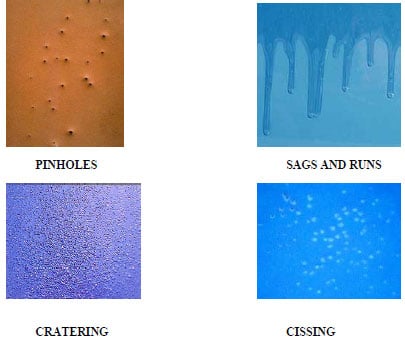 Typical paint and surface defects. Credit: Elcometer USA
Typical paint and surface defects. Credit: Elcometer USA
Particularly popular in the automotive and aerospace sectors (but also important to storage tank manufacturers and others), these bots free humans to work on solving --rather than finding-- paint-related problems.
Micro-Epsilon's reflectCONTROL PSS 8005.D automated paint inspection robot is specially designed for inspecting large objects. Four of these bots, placed on either side of a car shell is able to perform a complete surface inspection in just 60 seconds. This bot has been around for over a decade and this model must have inspected hundreds of thousands of car shell paint jobs in that time. That's a lot of dull human labor eliminated.
Watch this highly-efficient, but very dull robot in action...
See also:
2. The Tedious Thermal Spraying Robot
Thermal spraying can be tedious and time-consuming work.
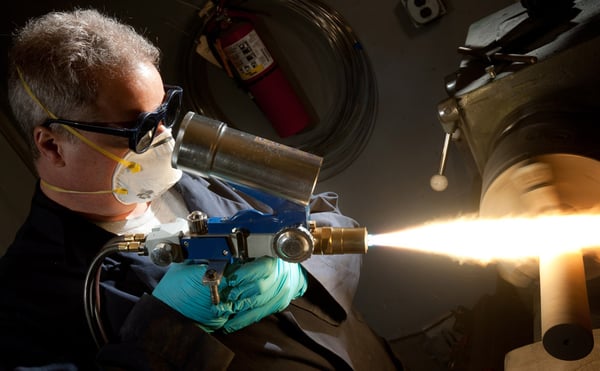
Credit: The Fabricator
The repetitive nature of the task isn't the only challenge though: a range of hazards from high temperatures, toxic gases, blinding light, poisonous metallic dust, and elevated radiation levels combine to make spray rooms places you don't want to be unless you're kitted out with the best safety equipment available. And even then, you would probably prefer to be on a beach. (With suncream on.) Or engaged on a higher-level task.
The UR10 collaborative robot from Universal Robots doesn't care about any of that stuff. More than three years in continuous operation, this focused and dedicated cobot has been working at Aircraft Tooling Inc. without once fantasizing about going on vacation or taking on more interesting challenges.
See also:
3. The Repetitive Testing Bot
There's no way to hide it, some tasks are extremely dull, repetitive and unfulfilling.

Credit: SHORPY
How about inspecting the temperature of frozen peas all day? Or 12 hour shifts where your only job is to squeeze plastic milk bottles to see if they leak? Or having a job that consists of nothing except slicing 50lb (23kg) slabs of cheese into four parts? (Source: BBC, "Some of the world's most boring jobs.")
Thankfully, robots have not discovered how to experience boredom, so they don't mind performing tasks many humans would find mind-numbing, such as testing the same part over and over. Some bots, like Ford's 'Robutt' perform tasks so tedious and time-consuming that they are beyond human capabilities. Instead of having a human durability testing worker put a car seat through a decade's worth of regular wear and tear by sitting down on it 25,000 times, Robutt does all the work.
Ford Europe revealed that Robutt received an update in early 2019 so that it can now able to simulate a sweaty butt. If Robutt keeps expanding its repertoire like this, it won't be on this list of dull robots for long, so enjoy it while you can!
See also:
The Dirty
These robots take 'getting your hands dirty' to a whole new level, so you don't have to.
4. The Sewer Bot
From Pittsburgh to Zurich, robots are used for inspection and repair of sewer systems. Overcoming frightening 'fatbergs,' cigarette butt canyons and diabolical diaperscapes, these bots can force their way through a wide variety of debris from liquid waste to concrete, sparing humans the unpleasant --and often extremely dangerous-- job of doing it ourselves.
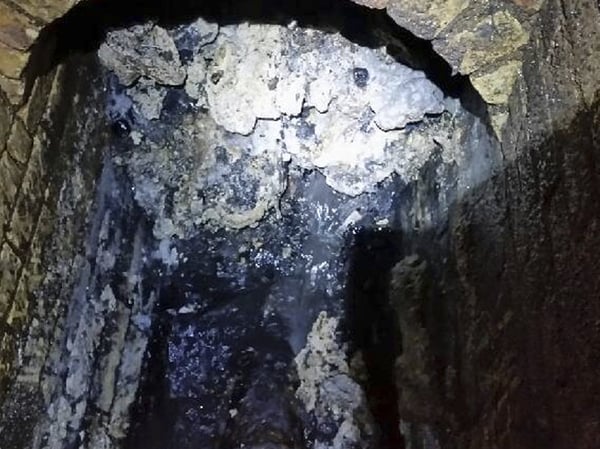
A section of the infamous, 130-ton Whitechapel fatberg. Credit: Thames Water
Some sewer robots, like the Bandicoot, from Kerala, India-based startup Genrobotics, can also detect levels of toxic gases in sewer systems, a crucially important feature in a country where an estimated 1,600 people have died tragically between 2014 and 2018 while cleaning sewers and septic tanks.
See also:
5. The Bacteria-Powered Bot
This robot's so dirty, that it's powered by bacteria! Meet 'Row-Bot' an ingeniously-designed, autonomous bot designed to clean up pollution in waterways.
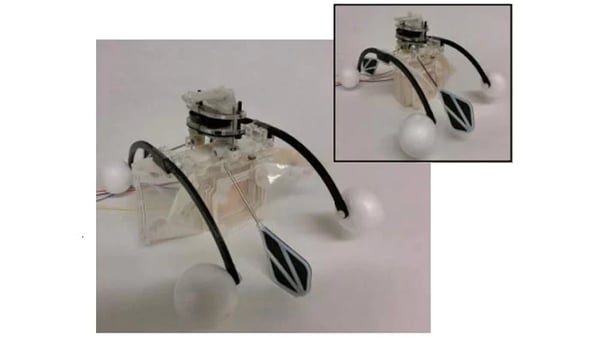
Main: Row-Bot with mouth open. Inset: Mouth closed. Credit: University of Bristol
Row-Bot swims around with its 'mouth' open to collect microbes, which it then breaks down in a microbial fuel cell to generate the electricity it needs to continue operating. The bot can also be used to neutralize algal bloom and oil slicks.
Row-Bot's creator Jonathan Rossiter sees the device as a precursor to "biodegradable, autonomous pollution-fighting robots," as he explained in a TEDTalk...
See also:
6. The Bacteria-Zapping Bot
Bacteria haven't survived for millions of years without learning how to adapt to their surroundings. With the development of antibiotics we have seen the rise of 'Superbugs' --strains of bacteria immune to antiobiotic treatment.

The Pseudomonas aeruginosa superbug is on the World Health Organization's
list of highest priority needs for new antibiotics. Credit: Janice Haney Carr/CDC
In the U.S. alone, at least 2 million people get antibiotic resistant infections each year and at least 23,000 die, according to the Center for Disease Control.
Enter germ-fighting robots, designed to kill hospital superbugs. The 'LightStrike Germ-Zapping Robot' from San Antonio, Texas-based Xenex uses pulses of germicidial UV light to obliterate life-threatening superbugs. A 2019 study from the world-renowned Mayo Clinic found that adding these bots to existing disinfection efforts resulted in a 47% reduction in C.diff infection rates, an increase in patient satisfaction scores for environmental cleanliness and a 52% reduction in Vancomycin-resistant enterococci infection rates.
Get down and dirty with one of Xenex's robots in this training video...
See also:
The Most Danger-Loving
OK. So, strictly speaking robots can't be 'danger-loving' because they can't experience fear. (Or love.) This is probably a good thing. If robots were able to experience fear, they would turn down dangerous missions like these...
7. The Interstellar Bot
Can you imagine giving the following set of instructions to a human?

Credit: The Reluctant Astronaut (Via IMDB)
"Your mission is to head 'thataway,' never to return, in the general direction of the Oort cloud, cutting through the vast emptiness of space at incredible speeds eventually to depart our solar system and entering the Kelvin-cold expanse of interstellar space, until decades from now you run out of fuel (if you're lucky enough to avoid an impact that destroys or disables you before then) and end up careening around deep space with nothing else to do except send streams of data back to Earth, which is all we really care about. Goodbye and good luck."
I can't either. That's because the vast bulk of space exploration work is for fearless robots like Voyager I and II.
Find out more about the Voyager program in this documentary...
See also:
8. The Bomb Disposal Bot
Bomb disposal is such a dangerous job that finding people to work in Explosive Ordinance Disposal (EOD) teams has become "a hard sell," even among military personnel.
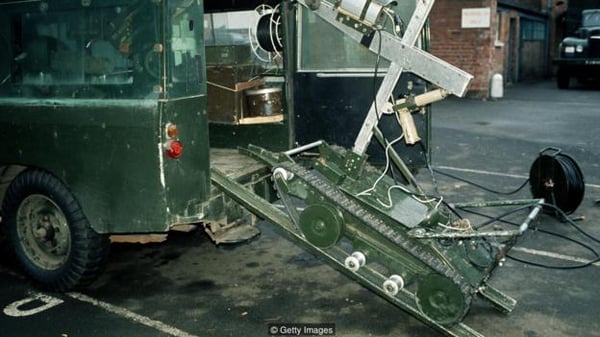
Credit: Getty Images (Via BBC)
Bomb disposal robots have been around for decades; the originals were crude devices, like the model shown above, and were controlled via tangles of control cables. These robots were good, but they weren't a patch on today's machines.
SRI International's Taurus provides virtual reality features and remote controls fitted with haptic sensory feedback technology and other gizmos. No stranger to danger, the teleoperated Taurus performs its work without translating into action the sweating, trembling and sometimes stressed out decision-making that can have dangerous consequences for human EOD experts.
Explore Taurus' telepresence manipulation system...
See also:
9. The Plume Bot
Anywhere close to the toxic ash plume formed by an erupting volcano is no safe place for a human being to be. Whether it's dodging pyroclastic flows on the ground at the crater's edge or withstanding hot waves of poisonous gas from 10,000 feet, danger-loving robots go to places that are unsafe or impossible for volcanologists to get to.
In 2017, researchers from the Universities of Cambridge and Bristol collected measurements from directly within volcanic clouds, together with visual and thermal images of inaccessible volcano peaks in Guatemala, using a bespoke drone that flew at 10,000 right into the plume. And it survived. The fixed-wing drone was flown from up to 8km (4.97 miles) away too, creating an even safer environment for operators. All in a day's work for a fearless robot.
Check out the results here...
See also:
- Drones & volcanic eruptions (Business Insider)
- DJI Drones in volcano research (Aeromotus)
Do you have a favorite dull, dirty, or danger-loving robot? Let us know in the comments!

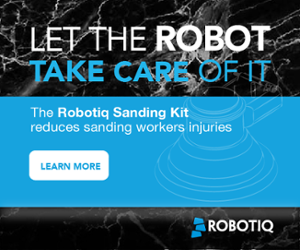







Leave a comment